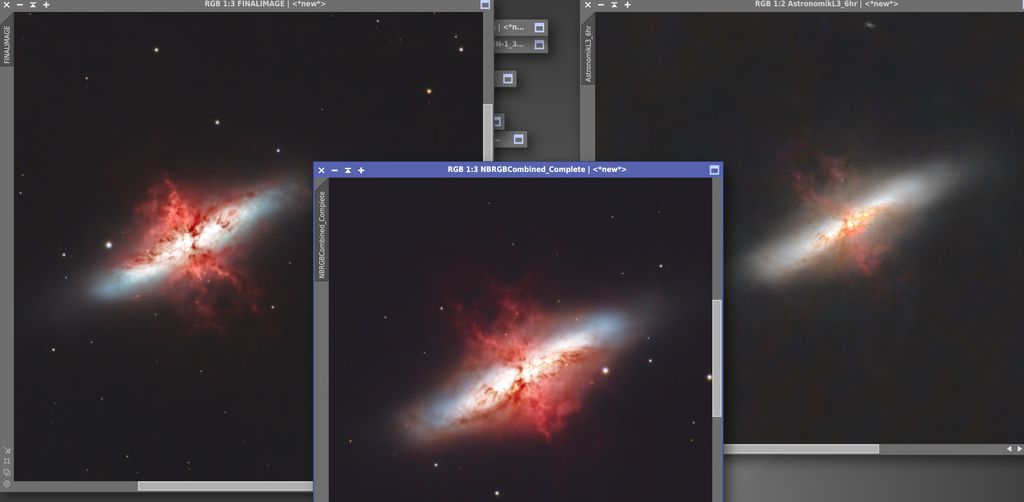6 hours of 300 second exposures with the Astronomic L3 filter
12 hours of 300 second exposures with the Optolong L-enhance
1 hour of 20 second exposures with the Astronomic L3 just for the stars
I stacked and processed the data so many different ways and the final result I decided to publish is here:
https://www.astrobin.com/5pscfd/
This data set includes just the 12 hours of L-enhance data (and then the 20 second subs for the stars) as the full data set I processed just didn't look as good.
Here is a screenshot showing three different versions:

The left image is the 12 hours of L-enhance data only
The right image is the 6 hours of Astronomic L3 data only
The middle image is the two data sets combined using the NBRGB Pixinsight script
I'm pleased with the final result I published but it has me wondering about whether I'm using the correct filters. My understanding was that the Astronomic L3 should be used for broadband targets and the L-enhance for emission nebulae. I've processed all of the versions to the best of my current ability but there will naturally be slight variances due to my processing. Throughout the whole process, I didn't find the combined data set to contain any more information than just the L-enhance data.
Is anyone able to shed any light on this? With so few clear nights, it's important for me to make the most of the imaging time I do get so I'm keen to fully understand these filters.


